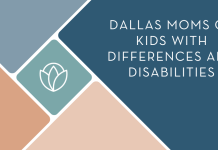 My passion for getting outside naturally extends to caring for our environment. Sustainability and parenting go hand-in-hand because it is about caring for the world my son will inhabit as he grows, just like cultivating the adult he will become.
My passion for getting outside naturally extends to caring for our environment. Sustainability and parenting go hand-in-hand because it is about caring for the world my son will inhabit as he grows, just like cultivating the adult he will become.
Practical sustainability begins with small, everyday habits that can teach toddlers how to care for the natural world. Here are some realistic, totally doable ideas.
1. Model Good Habits
Make sustainability a part of your lifestyle first. For example, make recycling prominent and normal. Toddlers are eager to please and love throwing things away. Build on this by guiding your toddler to see which items belong in the trash and which can be put in the recycling bin.
Be sure to to turn off the lights and unplug devices when not in use. My toddler loves to help turn off the lights when he leaves the room. This has become part of his routine, which is the goal of living a sustainable lifestyle.
You can also try growing a kitchen garden with your toddler or raising chickens are sustainable practices you can bring into the food you consume. Plus, they make sustainability into fun, family activities!
2. Choose Sustainable Products
Choosing cloth diapers at least some (or all) of the time is an easy way to produce less waste. You can save energy by hanging the diapers outside to dry on a nice day, which is also a great practice for drying your children’s clothes. Practical sustainability accounts for exceptions, like buying a box of disposable diapers for a weeklong vacation, but we’ve also managed a weekend away in only cloth diapers. The most important success factor for cloth diapering when traveling is having a place to rinse and hang dry your diapers.
When packing lunch, use reusable food containers, which saves money and reduces waste. We’ve recently started packing our own applesauce and yogurt pouches. I blend my son’s leftover fruit, including fibrous pieces like the tops of strawberries, into future yogurts and smoothies.
>> RELATED READ :: Recycling 101 :: How To Make Recycling Less Intimidating <<
3. Turn Trash into Treasure

Sometimes you need to buy a pouch on the go, or won’t have access to a space to rinse them out. In that case, you can save the tops for a fun craft. Try making toys and sensory activities from items you would usually recycle. Recycling is just one part of a sustainable practice, driven first by reducing, then reusing before recycling.
We’ve made bird feeders and miniature houses from empty milk cartons, and I love this idea of using one for a boat. A little bit of paint can go a long way! I’m also always saving toilet paper rolls, egg cartons, and boxes for future crafts and DIY toys.
4. Consume Less Overall
What can you create or borrow before buying? Consuming less overall and focusing on contentment is a very practical way to teach toddlers about sustainability. Too often, kids prefer the box the toy came in to playing with the actual toy. Children can learn and expand their imaginations by playing outside and letting nature be their playthings.
Consuming less can also extend to less fuel and electricity. Play outside and open the curtains to let in natural light when playing inside. Walk and ride where you can. Shorten your radius of frequent activities and you might be surprised about what new places you find to explore in your neighborhood.
5. Learn About Sustainability Together
Reading storybooks about sustainability is an easy way to make it part of your toddler’s world. The books don’t need to be complicated or tackle major topics like carbon emissions and renewable energy. Instead, start with books that teach your toddler to appreciate nature and ecosystems. Hello Ocean (available in English and Spanish) is one of my favorites about engaging with the natural world.
Let your toddler’s interests guide what you discover together next. Does your toddler have a favorite animal? Visit the Dallas Zoo, which always focuses each animal encounter with practical tips on how we can work together to create a better world for animals.
How are you teaching your toddler about sustainability? What tips do you have about incorporating more sustainable practices into your toddler’s life?













